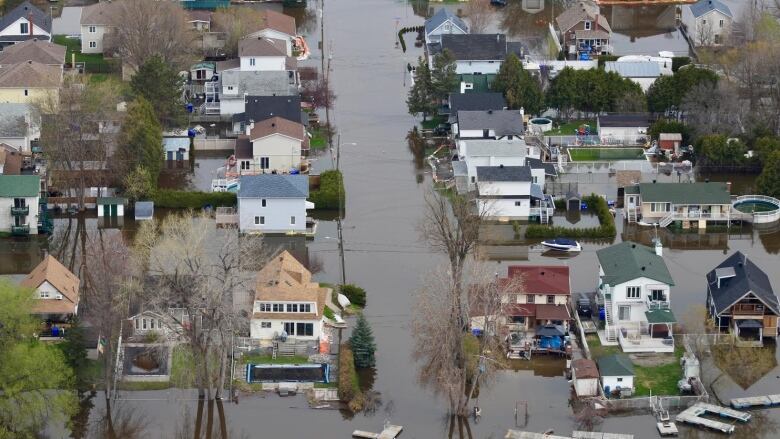Flooding: What to do if it happens to you
Heres a list of things to do in order to deal with flooding in your home or business

Flooding can happen any time. It pays to be prepared, and follow some basic steps to protect yourself and your property.
Before flooding occurs:
-
Elevate or carry items from the basement or ground floor to the upper floors.
-
Clear youreavestroughsand positionspouts to direct water away from your home.
-
Store chemicals, solvents and gas cans away from areas that might flood to avoidcontaminating flood water.
-
If you have a submersible pump, make sure it works, and that the power source can'tbe submerged.
-
If you're using equipment with a fuel-powered engine to drain water from the building, make sure it's located so as not to release carbon monoxide into the building.
-
Have your vehicle filled with gas and ready to go. Have a supply of fuel for generators and pumps.
-
Be sure to have a working carbon monoxide detector. Ensure that it's properly positioned in case water levels rise.
-
Label shut-off valves to make it easier to turn off gas, water and power in the event that you must leave your home. When turning off power, ensureyou're standingon a dry surfaceand use a woodenstick to flip the switch.
-
If you have natural gas appliances and must evacuate, contact your supplier immediately.
-
From the outside, useboards and sand bags to help keep water away from doors and windows.
-
If the approach to your home crosses a ditch. install markers on either side of the driveway to signal its position.
During flooding:
-
Shut and lock doors and windows, and leave your home if water levels make it unsafe to stay, or if told to leave by authorities. Take your emergency kit, pets and essential items.
-
Only take your car if water levels allow, and drive carefully.
-
When in doubt, do not take your car because if it breaks down, you mightblock traffic and prevent emergency vehicles from getting where they need to go.
-
Alertmunicipal authorities by identifying yourself at an emergency shelter so that they know where they can reach you.
-
If possible, help a neighbour or someone in need.
-
Follow instructions issued by authorities, and listen to media reports.
What not to do:
-
Do not waste time phoning (except for necessary calls mentioned above).
-
Do not pack, unlessyou have time.
-
Do not return to your home without formal authorization.
After the water has receded:
-
Check with an electrician before switching power back on.
-
Consult a heating specialist before turning your heating appliances back on.
-
Contact a qualified gas technician to reconnect the natural gas supply.
-
Consult yourmunicipality to confirm drinkingwater is safe. If in doubt, boil the water for five minutes before consuming it.
-
Clean any objects that were contaminated during the flooding. Dry and discard any absorbent materialssuch as drywall, insulation, carpets and plywood. Ask for professional advice..
-
Discard any food or medication that came into contact with floodwater.
-
Use boiling water to sterilize any contaminated kitchen utensils.
-
Watch for mold, which may lead to health problems. If you develop any health problems, immediately consult a doctor.
-
Prepare an inventory of the damage caused by the water to your property, with photos or videos. Inform your insurance company and your municipality. Keep all receipts of damaged goods for your claims.
Source: Leeds, Grenvilleand LanarkDistrict Health Unit and theQuebec Ministry of Public Security












_(720p).jpg)


 OFFICIAL HD MUSIC VIDEO.jpg)
.jpg)



























































































